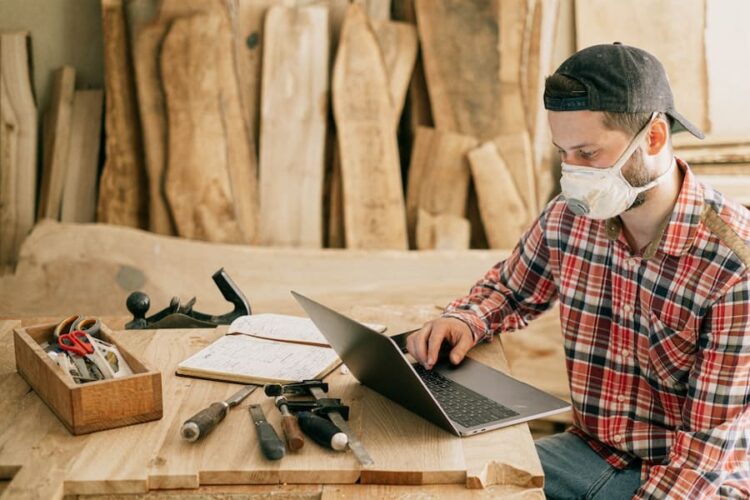Having stable and secure furniture is essential for creating a safe and comfortable living space. We’ve all experienced the frustration of furniture sliding and shifting on smooth floors, causing potential hazards and damaging the floors. Whether it’s chairs that won’t stay in place or wobbly tables, the struggle is real. In this article, we will explore practical and effective do-it-yourself (DIY) solutions to stop furniture from sliding. By implementing these simple yet effective techniques, you can safeguard your furniture, prevent accidents, and enjoy a more stable and secure home environment.
How To Stop Furniture From Sliding Diy?
Stopping furniture from sliding using DIY methods is a practical and cost-effective way to enhance the safety and stability of your living space. Here’s a step-by-step guide on how to accomplish this:
Identify Problematic Furniture:
Begin by identifying which pieces of furniture are prone to sliding. Common culprits include chairs, tables, bookshelves, and sofas. Take note of their placement and the type of flooring they rest on to understand better the factors contributing to their movement.
Clear the Area:
Before implementing any solutions, clear the area around the furniture to create a safe and accessible workspace. This will make it easier to work on the furniture’s base and apply the necessary DIY materials.
Measure and Prepare:
Gather the required DIY materials, such as furniture pads, non-slip rubber grips, Velcro strips, stoppers, and anchors. Measure the furniture legs to ensure you get the right-sized materials for each piece.
Furniture Pads:
Furniture pads are an excellent solution to prevent furniture from scratching the floor and reducing sliding. Choose pads with an adhesive backing and apply them to the bottom of each furniture leg. The soft material provides friction against the floor, preventing unwanted movement.
Non-Slip Rubber Grips:
For a more affordable alternative, cut non-slip rubber grips to match the size of the furniture feet. These grips offer excellent traction and are particularly useful on hardwood or tile floors. Simply attach them securely to the bottom of each furniture leg.
Velcro Strips:
Velcro strips anchor lightweight furniture, such as smaller tables or chairs. Attach one side of the Velcro strip to the furniture’s base and the corresponding side to the floor. This creates a strong bond, making it difficult for the furniture to slide.
Furniture Stoppers:
Furniture stoppers, caster cups, or glides are designed to keep furniture in place. Place the stoppers under the furniture legs, and they will grip the floor firmly, preventing sliding and minimizing the risk of flood damage.
Furniture Anchors:
For more extensive or top-heavy furniture like bookshelves or dressers, furniture anchors are crucial for preventing tipping accidents. Securely fasten the anchor to the wall and attach the other end to the furniture. This adds stability and ensures the furniture stays in place.
The Causes Of Furniture Sliding
Furniture sliding can be attributed to various factors, which can be both environmental and design-related. Understanding the causes of furniture sliding is essential to address the issue effectively. Some common causes include:
Smooth Floor Surfaces: Furniture placed on smooth and slippery flooring materials like hardwood, tile, or laminate are more likely to slide. The lack of friction between the furniture’s feet and the floor makes it easier for the furniture to move.
Weight Distribution: Uneven weight distribution on furniture legs can lead to instability and sliding. If more weight is concentrated on one side of the furniture, it can tilt or shift when pressure is applied, especially on uneven surfaces.
Uneven Floors: Uneven or sloping floors can cause furniture to slide, as the legs may not be in complete contact with the ground. This is particularly problematic for furniture with tiny feet or wheels.
Daily Usage and Movement: Frequent usage of furniture, such as chairs or sofas, can cause them to shift over time. This is especially common in high-traffic areas or when occupants frequently move or adjust furniture positions.
Worn or Damaged Furniture Feet: Furniture feet worn out, damaged, or missing protective padding can lead to increased sliding. Over time, the lack of grip and cushioning can cause the furniture to move more quickly.
Inadequate Furniture Design: Some furniture pieces may have a design that needs more stability or adequately supports the weight placed on them. This can be due to inadequate leg support, weak joints, or poorly distributed weight-bearing components.
Inappropriate Floor Protectors: Using the wrong type of floor protectors or neglecting to install them can contribute to furniture sliding. Floor protectors provide a buffer between the furniture and the floor, reducing friction and preventing damage.
Vibration and Movement: Vibrations from nearby appliances or activities can cause furniture to shift over time. For example, furniture placed near a washing machine or in a room with heavy foot traffic may experience movement.
Importance Of Furniture Stability And Safety
Furniture stability and safety are paramount for creating a secure and comfortable living environment. The importance of ensuring furniture stability and safety cannot be overstated, as it directly impacts various aspects of daily life and overall well-being. Here are some key reasons why furniture stability and safety are crucial:
Unstable furniture is a common cause of household accidents. Furniture that slides or tips over can lead to slips, trips, and falls, particularly for children, seniors, and people with mobility challenges. By securing furniture properly, the risk of such accidents can be significantly reduced.
Furniture stability is especially critical for homes with children and pets. Toppling furniture can pose severe risks of injury or even suffocation, especially in the case of heavy pieces like bookshelves or dressers. Properly secured furniture provides a safe environment for everyone in the household.
Sliding furniture can cause scratches, dents, and other damage to the furniture and the floor. Over time, this can lead to a decrease in the furniture’s lifespan and aesthetics. Ensuring furniture stability with appropriate safeguards helps preserve the quality and appearance of furniture.
Wobbly or sliding furniture can be annoying and uncomfortable. Stable furniture provides a reliable surface for activities such as eating, working, or relaxing, making day-to-day life more comfortable and enjoyable.
Furniture that moves or vibrates can create unnecessary noise and disturbances, disrupting the peaceful ambiance of a home. Secure furniture helps maintain a serene living space, free from distracting sounds caused by furniture sliding.
Additional Tips For Furniture Stability
- If you have furniture with adjustable legs, use toolings like shims or leg levelers to ensure each leg is stable and in even contact with the floor.
- If you have area rugs under furniture, use rug grippers or non-slip rug pads to prevent the rug and the furniture from sliding.
- Secure tall bookshelves and cabinets to the wall using furniture anchors or wall straps. This prevents them from tipping over, especially in homes with children or earthquake-prone regions.
- Regularly inspect the screws, bolts, and joints of your furniture and tighten them if they have become loose. Loose connections can compromise stability.
- For furniture with drawers, ensure heavy items are evenly distributed to prevent tilting or tipping when drawers are opened.
- Be mindful of weight limits on shelves and avoid overloading them with heavy objects to maintain stability.
- If you notice weak or wobbly joints, consider reinforcing them with wood glue, brackets, or metal braces.
- When placing items on furniture surfaces, distribute the weight evenly to prevent imbalance and potential sliding.
- Keep the area around furniture clean and free from dust and debris. Dirt or debris can reduce the effectiveness of non-slip solutions.
- Regularly inspect all furniture for signs of wear, damage, or instability. Address any issues promptly to prevent accidents.
Final Words
In conclusion, ensuring furniture stability and safety is essential for creating a secure and comfortable living space. Sliding furniture poses risks of accidents and damage to floors and furniture and can be frustrating. However, by implementing the DIY solutions and additional tips provided in this article, you can effectively prevent furniture from sliding and enhance the overall safety of your home. From using furniture pads and non-slip rubber grips to securing furniture stoppers and employing Velcro strips, these cost-effective DIY methods offer practical and reliable ways to keep your furniture in place. Additionally, anchoring top-heavy furniture and regularly inspecting and maintaining furniture stability is crucial to ensure a safe and stable living environment.
FAQ’s
Q: Why does my furniture keep sliding on the floor?
A: Furniture sliding is often caused by smooth floor surfaces, uneven weight distribution, or worn-out furniture feet. It can also be a result of daily usage and movement.
Q: Will furniture pads damage my floor?
A3: No, furniture pads are designed to protect furniture and floors. They provide a cushioned barrier that prevents scratching or damage to flooring materials.
Q: Can I use DIY solutions on all types of furniture?
A: Yes, DIY solutions can be applied to various types of furniture, including chairs, tables, bookshelves, and couches. However, choose the appropriate solution based on the furniture type and floor surface.







